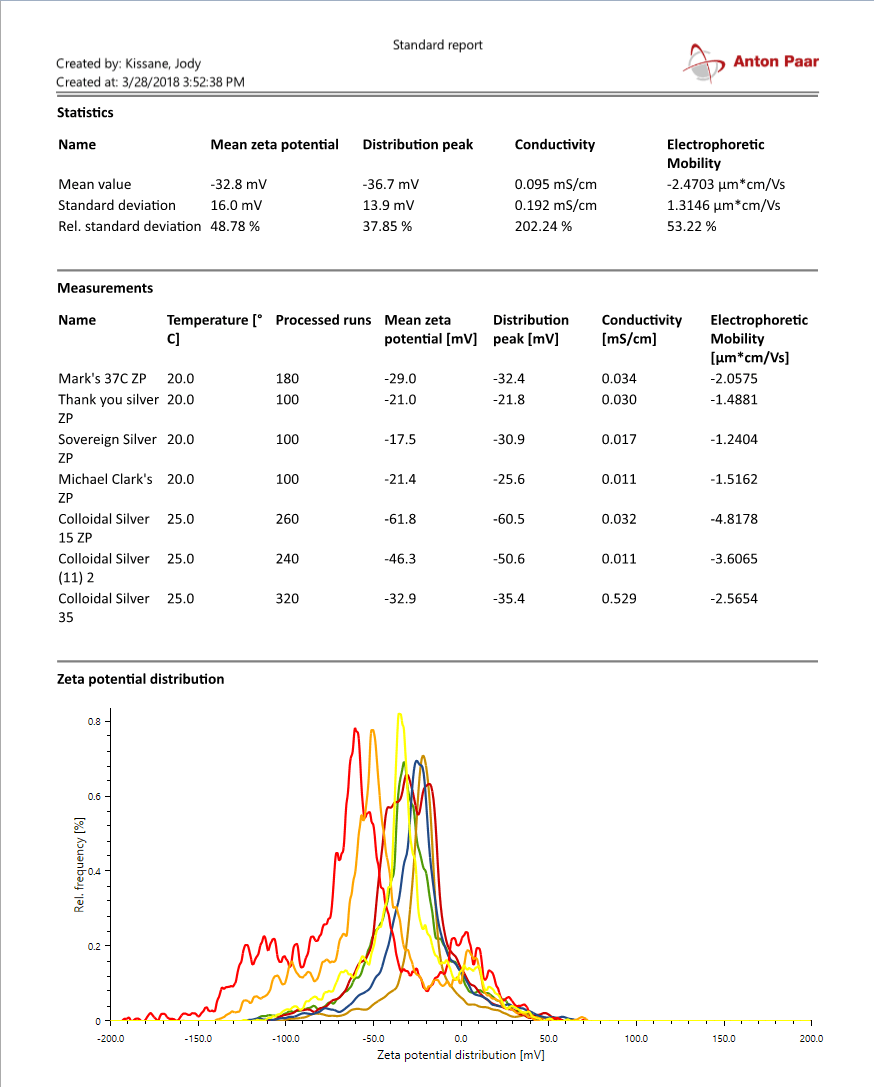Lab-test Zeta Potential Confirmation
7 samples from different sources were submitted for testing, including one from Sovereign Silver.
The fifth sample “Colloidal Silver 15” , coloured red, was from Biophysica and showed that our Zeta Potential had a mean of -61.8 mv with many particles having a ZP of –130 mv. Thus we surpassed all others in quality by a wide margin.
It is becoming apparent that even the most up-to-date analytic laboratories and equipment manufacturers are using equipment that is sufficiently obsolete as to be unable to reliably detect or measure nanoparticles less than 100 nanometers. This challenge becomes even more difficult when the colloidal samples we send are too dilute, less than 50 parts per million (mg/litre), and we want information down to 1 nm in size. Because the sample concentration is too low, there may not be enough light scattered to make a measurement.
Tunable Resistive Pulse Sensing (TRPS) measures nanoparticles suspended in electrolytes on a particle-by-particle basis as they pass through a nanopore. According to IZON, the manufacturer, this is a huge step forward as the more commonly used light scattering techniques only provide bulk estimates with low accuracy and very low precision. TRPS has the unique ability to accurately measure the zeta potential of individual nanoparticles. This is incredibly important when working with samples that are polydisperse in size or charge
The precision, resolution, and accuracy of size measurement in TRPS is unmatched by any other nanoparticle analysis technique. The transient current pulse caused by a particle traversing the pore is directly proportional to particle volume, enabling a highly precise and repeatable measurement of size to be achieved; in ideal conditions TRPS offers sub nm resolution of diameter. Every particle measured is compared to a set of NIST traceable calibration particles of known size, which ensures accuracy and repeatability. This calibration step enables the real size distribution of a particle set to be generated to a very high precision and accuracy. The measurement of particle concentration is also the best available, with data accuracy on a linear scale. By way of comparison, Dynamic Light Scattering (DLS) such as Malvern Zetasizer is unable to measure concentration at all, and NTA is only accurate on a log scale and is too coarse for most scientific purposes. Traditionally the nanomedicine field has relied on DLS measurement, sometimes backed up by TEM. DLS is now an inappropriate and obsolete technology especially for sizes smaller than 50 nm.

